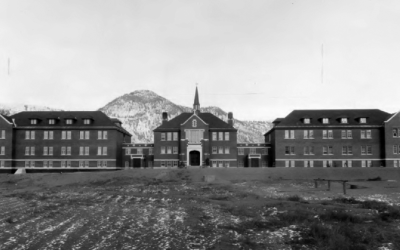Calgary and Toronto: The Frontier Centre for Public Policy released today The 30th Anniversary of the C-Train: A Critical Analysis of Calgary’s Light Rail Transit System. The study finds that the concurrent myths that Calgary’s Light Rail Transit (LRT) is at the same time more economical and more efficient than buses is incorrect. Authored by policy analyst Steve Lafleur, this backgrounder finds that the costs of LRT are understated while its benefits are overstated. LRT is often thought of as a happy medium between buses and trains. In reality, it combines their disadvantages. Light rail transit is slow, inflexible, and expensive.
LRT proponents have created the illusion that the CTrain is cost effective. They point to the CTrain’s lower operating costs compared with buses. However, the massive capital costs of LRT swamp the operating-cost savings. The proposed Southeast CTrain extension for example, is estimated to be between $1.2-billion and $1.8-billion. The cost of the temporary Bus Rapid Transit (BRT) route was a mere $30-million – including a major park and ride facility. The City can provide excellent mass transit at an affordable price.
In addition, although the CTrain is supposed to help curb urban sprawl and benefit low-income people, it has achieved the opposite of these intentions. Park and ride has encouraged people to live out farther and drive to LTR stations; it has not had the fully desired impact on automobile use. Calgary’s LRT has done more to accelerate urban sprawl than to curb it, and this acceleration has been done to the detriment of the poor.
“For the cost of building the Southeast extension,” Lafleur writes, “the City could buy between 1,700 and 2,500 high quality, articulated buses.” It would provide a greater diversity of routes, more choice to riders, and would be very helpful to those who cannot afford to drive to a park and ride or who do not work downtown.
“Trains may be trendier than buses,” says Lafleur. “Bus Rapid Transit (BRT) lines, however, are more flexible, more efficient, and a more cost effective way to move mass numbers of people. They provide good quality public transit for a large percentage of the population – especially the city’s poorest.”
Key Findings:
This examination of Calgary Light rail Transit reveals several important issues:
- Calgary’s LTR is not as inexpensive, as efficient, and as flexible as its proponents say.
- The capital cost per weekday rider due to the building of extensions since 1990 is just over $15,000
- The LRT is not curbing urban sprawl but may be fuelling it.
- The LRT is not very friendly to the urban poor.
- Bus Rapid Transit (BRT) lines are more flexible, less expensive and more efficient than LRTs.
- BRTs are a much better urban transportation alternative.
Download a copy of the The 30th Anniversary of the C-Train here:
For more information and to arrange an interview with the study’s author, media (only) should contact:
|
Steve Lafleur
705-521-5233
|
Marco Navarro-Genie
Research Director,
Frontier Centre for Public Policy
403-995-9916
navarrom@fcpp.org
|


